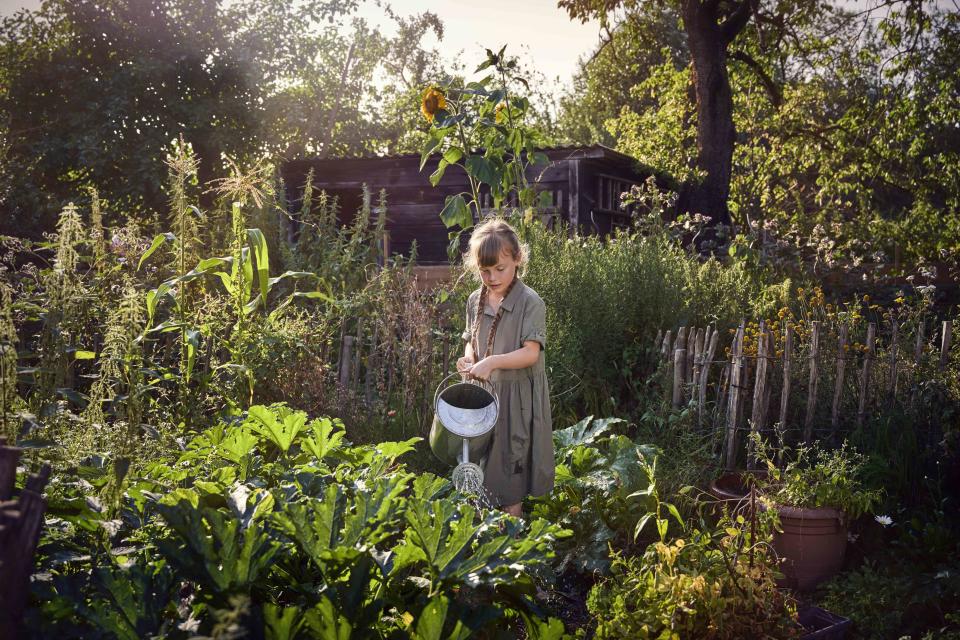'Valuing the Marginal' in Permaculture Garden Design
A phrase that is commonly used in permaculture circles is "valuing the marginal." Here's what it means.

If you have an interest in permaculture design, then you may know, or will soon learn, that there are certain phrases that crop up again and again within this arena. One phrase that is commonly used in permaculture circles is "valuing the marginal," and people often speak or write about the importance of doing so.
But if you are new to permaculture and unfamiliar with its ethics and principles, you may not entirely understand what we mean by this phrase. Or you might have some trouble understanding how and where this concept comes into play and where exactly it is employed.
Permaculture, a portmanteau of permanent and agriculture, is a growing/gardening philosophy that focuses on agriculturally productive ecosystems that are based on—and have the diversity, stability, and resilience of—natural ecosystems.
What Does 'Valuing the Marginal' Mean?
When we talk about valuing the marginal in permaculture design, we are really talking about two closely related but distinct ideas.
Firstly, we are talking about, in a literal sense, valuing edge and making the most of spaces around the borders of our garden.
Secondly, we are talking about being open to "fringe" concepts and ideas in all areas of life and embracing those who may be on the margins of society and perhaps live outside of societal norms.
Both of these ideas can be important to consider when we are creating permaculture designs and embracing permaculture ideas and ideology in our everyday lives.
Valuing the Marginal in a Literal Sense
Using edge is a closely related concept that ties into the first sense of valuing the marginal. In permaculture design, we aim to boost biodiversity and increase the number of beneficial interactions within a system, which in turn increases stability.
The edge is the most productive and species-rich part of an ecosystem, and so we seek to maximize edge and make use of these fringe spaces, or liminal spaces, within our designs.
Learn More:Using 'Edge' in Garden Design Is Essential for Boosting Biodiversity—Here's How to Do It
We also aim to do all we can to obtain a yield in our gardens and on our properties, and doing so can often mean thinking very carefully about how we use every inch of space.
Not only should we seek to increase edge, we should also make the most of even the most overlooked corner of our space and value all the forgotten little spaces around the perimeters of a garden.
We should look to the boundaries of our property. And also think about other spaces that are literally around the margins of a garden—growing upwards, perhaps, on walls and fences, and maybe even on the roofs as well as the upright portions of the framework of garden structures.
On a smaller scale, we might also add window boxes and hanging containers to make the most of every inch of space at our disposal. And even when we do not have our own gardens, do all we can on a sunny windowsill.
Valuing the Marginal in a Broader Sense
As well as literally valuing and making the most of edge and fringe spaces in a garden, in permaculture, we also need to look at what it means to value the marginal in a much broader context.
Permaculture itself is an idea that, while definitely gaining in popularity, is still, in many areas, an unconventional concept.
Like so many ideas and movements that are not necessarily considered mainstream, permaculture can teach us a lot about how best to live our lives. And many other marginal ideas can definitely do the same.
It is important for each of us to step outside of our bubbles once in a while and to get a deeper sense of what others, different from the mainstream and perhaps very different from ourselves, are thinking.
All too often, people see differences when we should be looking for commonalities and seeing the things that can draw us together, even when we do not always agree. We need to value and embrace differences of all kinds while finding ways to connect our own lives with those of people who might see things in a different way.
We sometimes need to look for the fish swimming against the current to see where the rest of us might be going wrong. Sometimes, we simply need to listen to those whose voices have not been heard loudest in the past.
As gardeners, and in our wider lives, valuing the marginal can give us a new sense of perspective, insight, and wonder at the immense diversity around us and the joys and amazing things that diversity can bring.
:3 Inspiring Stories Show How Permaculture Can Solve Garden Problems

